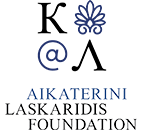State and military institutions - Diplomatic relations (873 Subjects)
High-ranking officials of the kingdom of Tonkin.
Top: The king of Tonkin (Vietnam) exits the palace. Bottom: The king of Tonkin (Vietnam) leaves for war.
Procession which escorts the queen mother or the queen of Tonkin as they exit the palace.
Funeral procession of the king of Tonkin (Vietnam).
Carriages with livestock and other provisions leave Hanoi. They are destined to feed the soldiers and other followers of the funeral procession of the king of Tonkin (Vietnam).
The seal of Shah Ismail I of Persia, with an interpretation of the symbols by the author.
The tugra (signature) of the Shah of Persia, with interpretation of the symbols by the author.
Funerary procession of the king of Tonkin (Vietnam).
Arms of the city of Novgorod, Russia.
Petrovsky Palace at the entrance of Moscow. The palace was built in the era of Catherine the Great and was the penultimate stopover of Russian emperors in their journey from Saint Petersburg (then capitall of the Russian empire) to Moscow.
Arms of the city of Moscow.
The Great Gun of Moscow or Tsar's Cannon at Kremlin gardens. Even though the cannon was never used at wartime, it served as symbol of the Russian dynasty from the 16th century onwards.
Circassian prince. Circassian man.
Observatory from which the Tatars of Kuban watched the movements of their Kirkassian neighbours. According to the author, in summer a fire was lit in these nests to keep the mosquitoes away.
Russian guard at Crimea.
The Voivode (Ottoman governor) of Athens.
Scene from the Janissaries' revolt against Grand Vizier Ibsir Pasha in 1655. The Sultan receives the Janissaries' claims; at the same the dead body of the Chief Eunuch of the Harem is surrendered to the insurgents through the palace window.
Procession accompanying the Sultan from Topkapi Palace to the mosque.
Scene from the siege of Rhodes, 1522.
Privateers attacking a ship.
The Bey (Ottoman official) of Upper Egypt , enters in Cairo.
Ways in which captives are tortured in Egypt.
The author's ship is attacked by three privateer ship outside Tunis.
Ruy Freire de Andrade, 17th-century Portuguese naval commander and colonist, throws into a boiling cauldron the new-born baby of a family native to the Persian gulf islands.
Map of the possessions of Venice in the Italian peninsula.
The Senate of Venice.
Sorting process for the election of the Doge of Venice.
1. The mausoleum of Manuel I of Portugal at the Convent of the Order of Christ, Tomar, Portugal. 2. The sarcophagus of Manuel I of Portugal. 3. Water-douching tool used for the cleaning of cannons. 4. Banana tree.
9. Map of Gibraltar. 10. The constellation of Scorpio. 11. The cap worn by the Doge of Genoa. 12. Drawing of the interior stairway of the Arsenale building, Genoa. 13, 14. Author's study on the light spectre of different types of lanterns. 15,16, 17. Instrument for the distillation of mercury which the author saw in Italy. Instruments of the type were widely used in 17th century alchemist circles.
51. The prince heir to the Ottoman throne. On his right, the window through which the Sultan spied on the meetings of the Divan (assembly of Ottoman officials). 52. Plan of the Tower of Leander (bottom right). Plan of mosque (bottom centre). Drawing of minaret (bottom left) and other architectural and decorative features of a mosque (top) 57. Detail from wall decoration of the imperial mosques of Istanbul. 63. Wooden floor of Ottoman house in Istanbul.































